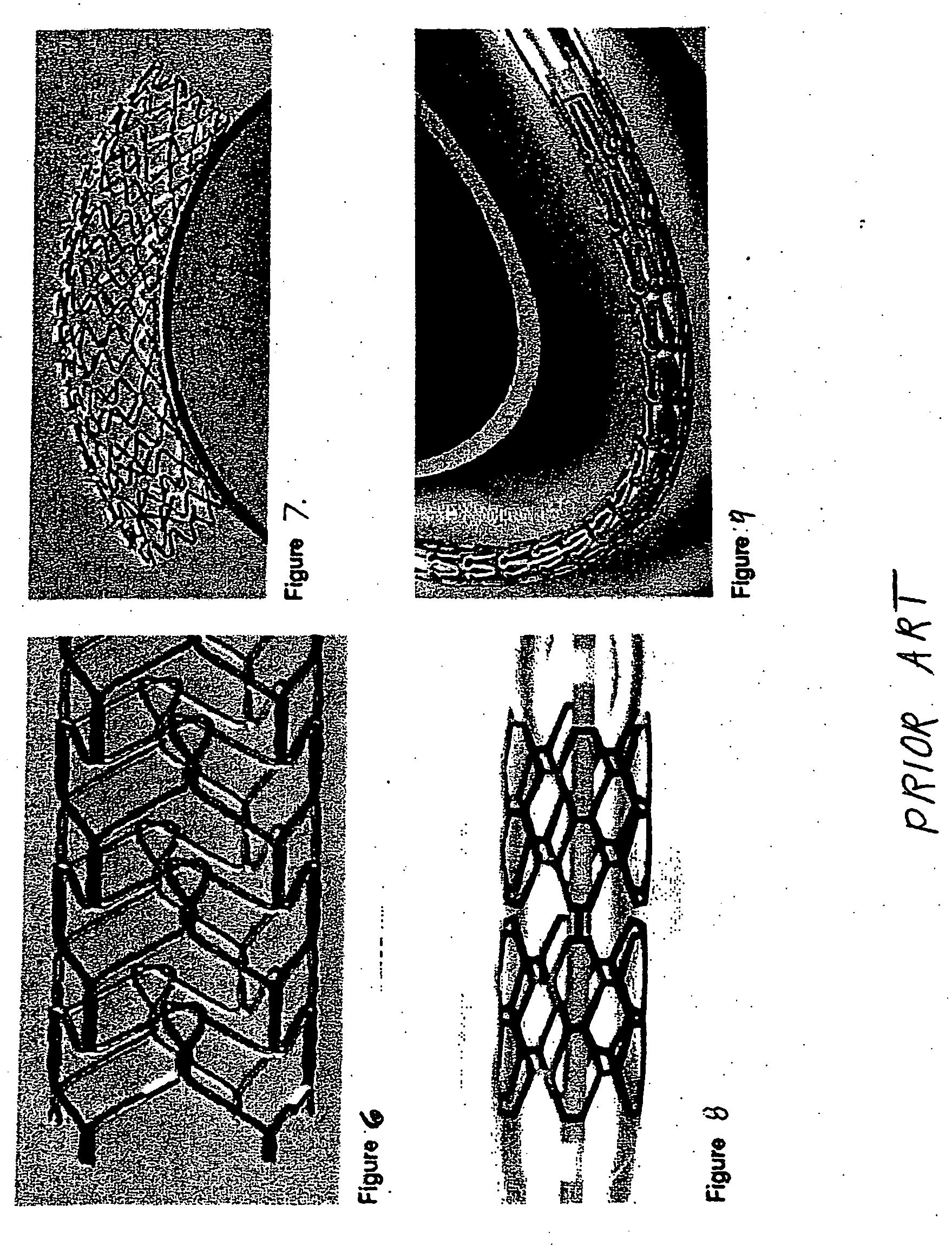Permanent thrombus filtering stent
a thrombosis and permanent technology, applied in the field of permanent thrombosis and plaque filtering stents, can solve the problems of permanent disability and death, cholesterol accumulation, limit the flow of blood supply to the heart, etc., and achieve the effects of preventing stoke, reducing the incidence of restenosis, and high blood pressur
- Summary
- Abstract
- Description
- Claims
- Application Information
AI Technical Summary
Benefits of technology
Problems solved by technology
Method used
Image
Examples
Embodiment Construction
[0054] For a general understanding of the features of the present invention, reference is made to the drawings, wherein like reference numerals have been used throughout to identify identical or similar elements. FIG. 14 is a perspective view of a stent 20 according to the present invention. Stent 20 is comprised of a length 12 of expandable mesh. It should be appreciated that the mesh can be made from a plurality of materials. The preferred materials have combined properties such as the ones approved by the FDA and which are corrosion resistant, flexible, self-expendable or expendable by a balloon, biocompatible, exhibit strong scaffolding, and which do not produce an effect in MRI. Examples of such materials are 316L stainless steel, palladium / iridium, palladium core / cobalt alloy, and Nickel / titanium. It should be appreciated that the stent of the present invention is not limited to a specific material or combination.
[0055] As shown in the embodiment of FIG. 14, the stent is made...
PUM
 Login to View More
Login to View More Abstract
Description
Claims
Application Information
 Login to View More
Login to View More - R&D
- Intellectual Property
- Life Sciences
- Materials
- Tech Scout
- Unparalleled Data Quality
- Higher Quality Content
- 60% Fewer Hallucinations
Browse by: Latest US Patents, China's latest patents, Technical Efficacy Thesaurus, Application Domain, Technology Topic, Popular Technical Reports.
© 2025 PatSnap. All rights reserved.Legal|Privacy policy|Modern Slavery Act Transparency Statement|Sitemap|About US| Contact US: help@patsnap.com



